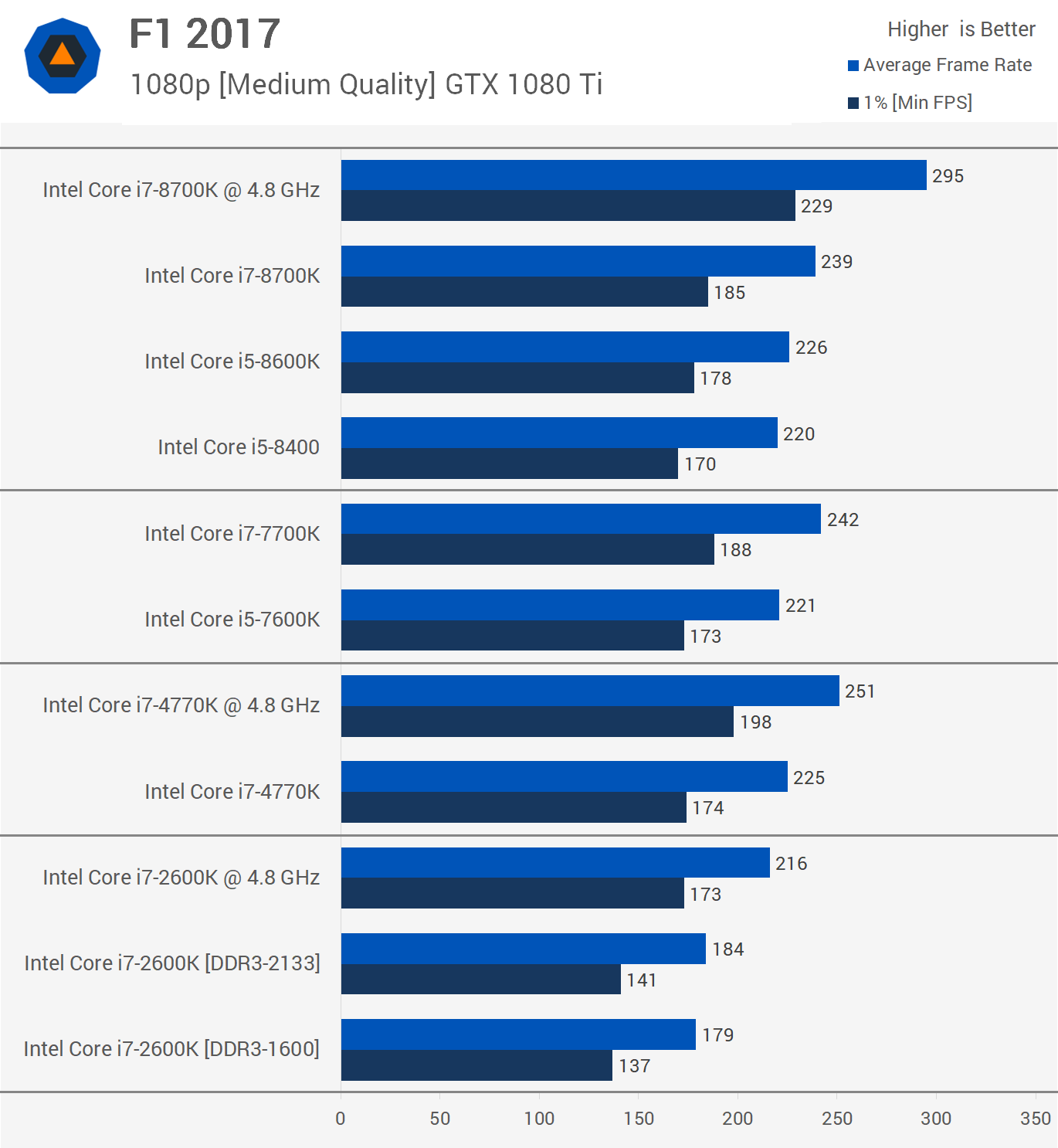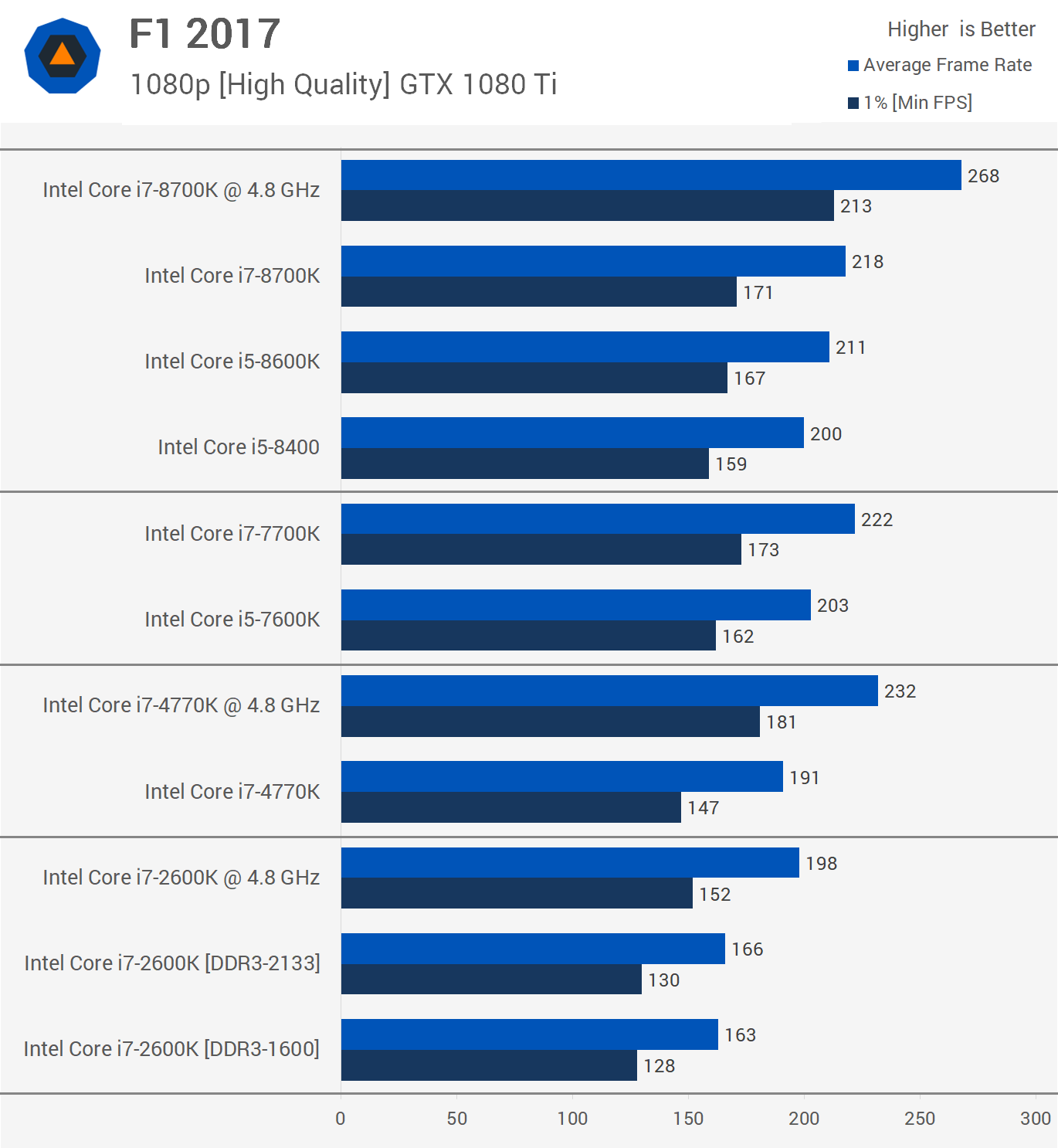F1 2017, Total War Warhammer II, Call of Duty WWII

Next up we have F1 2017 and although the 2600K does trail behind the pack by quite a large margin it also provided well over 100fps at all times, so highly playable performance then. Still, if we use F1 2017 as a measuring stick with the medium quality settings the 2600K was 23% slower than the 8700K and 27% slower once both CPUs are overclocked.

Jumping up to the high quality settings and here we see that once overclocked the 2600K is able to nudge ahead of the 4770K this time. Still, it was 26% slower than the 8700K when comparing the overclocked results.

Now, with the ultra high quality preset enabled the GTX 1080 Ti starts to limit the performance of the 8700K and this means the overclocked 2600K is now just 12% slower.

Increasing the resolution to 1440p results in a heavy GPU bottleneck and now the 2600K is just 6% slower than the 8700K, though it does only roughly match the stock 4770K.

Moving on, the second to last game tested was Total War Warhammer II, in which we again find the stock 2600K struggling, at least when compared to the modern CPUs. Dipping down to 100fps meant that the 2600K was 37% slower than the 8700K. That said, overclocking really helps out the old Sandy Bridge processor, boosting the minimum frame rate by 27%, or 20% slower than the 8700K. Once again though, we see that the 8700K is limited by the GTX 1080 Ti.

I expected the high quality preset to reduce the margin between the 2600K and 8700K but it has done the opposite. At stock, the 2600K is now 39% slower and when overclocked still trailed the GPU-limited 8700K by a 29% margin. These margins can be seen when looking at the 1% low data.

Quite shockingly, even the ultra quality settings don't allow the 2600K to catch up and here it is much slower than expected. There has to be some kind of design or platform limitation here.

Bumping the resolution up to 1440p finally sees the margin close up but even so the overclocked 2600K is not where you'd expect it to be, still trailing every other CPU tested by an 8% margin. The 4770K also uses DDR3 memory, albeit higher clocked 2400 stuff, but still while that might aid the margin were seeing, it really has to be down to IPC improvements.

Wrapping things up we have the Call of Duty WWII results and as usual we'll start with the medium or in this case, normal quality settings. Here the overclocked 2600K is able to edge out the 4770K, albeit by a slim margin. Meanwhile, compared to the 8700K, the overclocked 2600K was 28% slower when judging the 1% data.

We find again that when increasing the quality settings, this time to high, the margin actually increases and the overclocked 2600K is now 33% slower than the overclocked 8700K when comparing the 1% low data.

The margin remains much the same even with the extra quality settings enabled. Here the overclocked 2600K was 32% slower than the 8700K.

Even at 1440p we see similar margins and here the overclocked 2600K was 33% slower than the 8700K. So for those seeking maximum frame rates in this fast-paced first per shooter, you're not going to want a Sandy Bridge processor.
